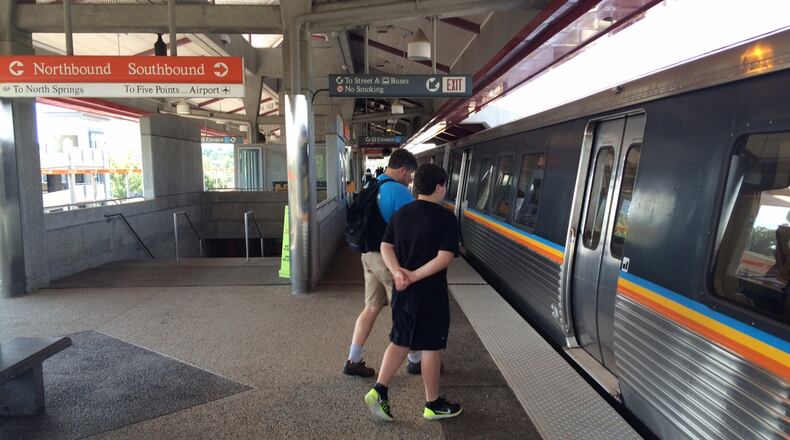MARTA leaders recently laid out their funding plans for expansion on three proposed routes — north along Georgia 400 from North Springs station to Windward Parkway; east along I-20 to Stonecrest Mall; and light rail from Lindbergh Station down Clifton Road to Emory University and through to Avondale station. These are in addition to the planned expansion projects within Clayton County, which Clayton voters approved in November 2014.
MARTA plans to go to the General Assembly next year and ask the state for authority to hold a referendum that would allow voters in Fulton, DeKalb and Clayton counties to approve or reject an additional half-penny sales tax. That money, when matched with federal dollars, would pay for the build-out, as well as for some operations and maintenance of the expanded system.
Even though last year’s House Bill 170 allows counties and jurisdictions to band together to fund projects, those mini T-SPLOSTs are limited to five years. For these projects, MARTA needs a 40-year sunset on the half-penny tax, in order to trigger bonding capacity necessary for the project. The state has to approve that.
In the following excerpts, edited for clarity and space, MARTA board chairman Robbie Ashe discussed the project and the agency’s strategy:
“Right now we’re talking to Fulton, DeKalb County, Clayton county and the city of Atlanta about what we’re trying to accomplish, to have a shared understanding of what the vision is and the very large obstacle between us. We don’t have a long-term revenue stream remotely adequate to pay for any of these expansion projects.
“Assuming that those conversations go well, and they have so far, we will go to the 2016 General Assembly (and) ask them to permit our member jurisdictions to ask their voters for an additional half-penny sales tax that would last the duration of MARTA’s existing penny (tax). That half-penny would go to finance these expansion projects. They would then roll (into) operations and maintenance once (the projects) are delivered.
“We believe that the math on that (half-penny) leads us to about $8 billion worth of projects over the next several years. A half-penny in Fulton, DeKalb and Clayton is approximately $200 million a year. If it lasts the duration of our existing penny, we would be able to, conservatively speaking, without remotely taxing our credit card, get to $4 billion.
“Because it would last that 40 years, we get bonding capacity.
“The other important piece of it, in addition to increasing our bonding capacity, is the ability to go to Washington and to guarantee to the FTA (Federal Transportation Administration) that we have a local match that lasts the duration of the build-out for these projects. These are all billion dollar-plus projects. They will not be delivered — they cannot be delivered — in five years or less, which means that unless we get a longer duration on that sales tax we can’t get federal money to match. At the very best we would get very limited federal money.
“But equally important, to get the highest level of federal match, we are looking to have that demonstrated long-term operations-and-maintenance revenue stream. That’s why delivering capital projects on the front end and then having the revenue stream roll over to O&M is so important, because the FTA is tired of paying for projects that get mothballed 5, 6, 8 years after they get built.
“The half-penny, if it lasts for the duration of MARTA’s existing penny (tax), would be a revenue stream and a local match that is virtually without peer anywhere in the United States. It makes us very confident that we could go to Washington and get the highest level of federal match.
“I am optimistic that we will be able to make that case (to the General Assembly). We are spending a lot of time and effort talking to our local jurisdictions. We’ll go to the 2016 General Assembly and hopefully get the authorization. At the end of the day, what we’re asking for is permission for Fulton, Clayton and DeKalb residents to decide for themselves. Do they want to make the initial investment in their system?
“I hope we will be able to make that case. The 2015 General Assembly showed that we came really close. There were a few unanswered questions that really prevented us from getting across the goal line, but we’ll have the opportunity to answer those questions. We don’t pretend to have all the answers. If somebody has a better idea about how we should finance these projects, we’re more than happy to listen to it. But this is just the best idea we’ve been able to come up with.”
About the Author
Keep Reading
The Latest
Featured


